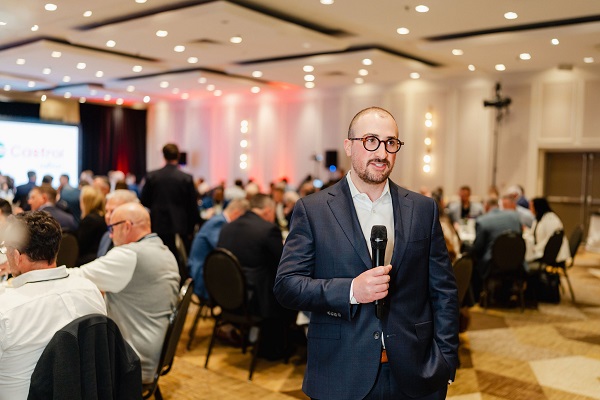Ensuring industry success amidst economic challenges
With emerging technologies like electric vehicles (EVs) and advanced driver assistance systems (ADAS) taking the industry by storm, combined with labour challenges and a changing economic landscape, the auto care industry is undoubtedly changing.
Zakari Krieger, Vice President of Prime CarCare at Fix Network World, dives into the obstacles Canada’s auto care sector is facing, how businesses can remain successful, and what opportunities are available.

Zakari Krieger, Fix Network World
In today’s economy, what is the biggest challenge auto repair shops face?
Overall, there are a few significant challenges that come down to one core factor: inflation. Statistically speaking, the number of repair shops in Canada has shrunk by 20 per cent over the past two years, primarily due to inflationary pressures that have impacted repair shops, where 90 per cent of current mechanical service locations in Canada are small enterprises that staff between one to nine employees.
Inflationary cost pressures include labour costs, increased equipment, capital expenditure costs, increasing parts costs, and shrinking margins they can pass on to their customer. As a result, these added costs decrease the overall profitability of the mechanical repair business segment within the auto care sector.
Additionally, the impact of the historically fast rise from historic low interest rates post-financial crisis and through the pandemic lockdown periods certainly does not help growth. Our industry comprises many small businesses and entrepreneurs, many of whom have been impacted by business profitability and cash flow when connected to floating rate credit products, whether financing ownership of their companies or the property of their business.
What are some opportunities auto repair shops can seize to ensure success moving forward?
While these challenges are indeed real and have had broad impacts throughout the industry, many high-caliber shop owners have seen tremendous success within this economic environment. These businesses have positioned themselves to be successful with strong financial acumen, exceptional customer experiences, and the ability to attract and retain staff with suitable support systems and benefits for their staff.
During the pandemic, supply chains were significantly impacted, particularly for aftermarket original equipment (OE) manufacturers. Today, however, OE deliveries and inventory are recovering, placing us in a better position than before. Yet, inflationary pressures and high costs associated with leasing and financing new vehicles have rendered purchasing new vehicles unaffordable for many. As a result, the average age of vehicles in North America is at an all-time high, currently 12 years, and will likely increase further.
For the short and medium term, this presents a very attractive opportunity and environment for the auto care sector, allowing for more opportunities to capitalize on servicing customer’s vehicles.
What impact do emerging technologies have on the industry?
ADAS is an incredible opportunity for Canada’s auto care sector. The ADAS industry is expected to grow in North America to over 70 billion Canadian dollars by 2030 and over 11 per cent in compound growth annually. I believe in the evolution of ADAS for mechanical shop owners, as it adds additional service revenue and allows businesses to diversify into different areas of the automotive repair industry. This can include many things, such as auto-glass replacement, which, traditionally, the auto repair shop owner would either not think of, turn away, or recommend another business to customers.
Building on this, while emerging technologies such as EVs will absolutely impact the financial composition of the auto repair shop as service categories change, auto repair shop owners need to be proactive now by considering reinvestment into their businesses and service diversification, including ADAS and auto glass repair.
Statistically, the lubrication segment of the mechanical shop continues to shrink with increasing oil change intervals and increasing EV registrations. The average mechanical shop, with 10 per cent in service revenue from lubrication and oil change, needs to plan for the future and how to make up this revenue segment as that industry component gradually changes over time.
What is one thing auto repair shops need to remember going forward?
The industry’s future is bright; like with the change from carburation to gasoline direct injection (GDI), the industry resisted change. Many who did not want to adapt to new technologies had the technology and the industry pass them by.
The consumer in today’s environment is in control of so much knowledge with the development of the internet, the advancement of smartphone technology and recent developments in artificial intelligence. One thing auto repair shops should keep in mind as we advance is that the value proposition of the repair industry is changing with consumer expectations; all focus should be on the consumer and how to better connect with consumers so they end up at your shop.
Naturally, to take full advantage of the opportunities available, businesses must ensure that their operations, employee training, equipment, and processes are in place to support customer transactions effectively. Enhancing the customer experience in the automotive repair industry is crucial for businesses to flourish in the future.
About the Young Professionals in the Auto care sector
Young Professionals in the Auto care sector (YPA) is an Automotive Industries Association of Canada (AIA Canada) community comprising of young executives, of 45 years or younger, in the Canadian auto care sector. They support the career growth of young professionals by expanding their network and assisting them in becoming a thought leader in Canada’s auto care industry.